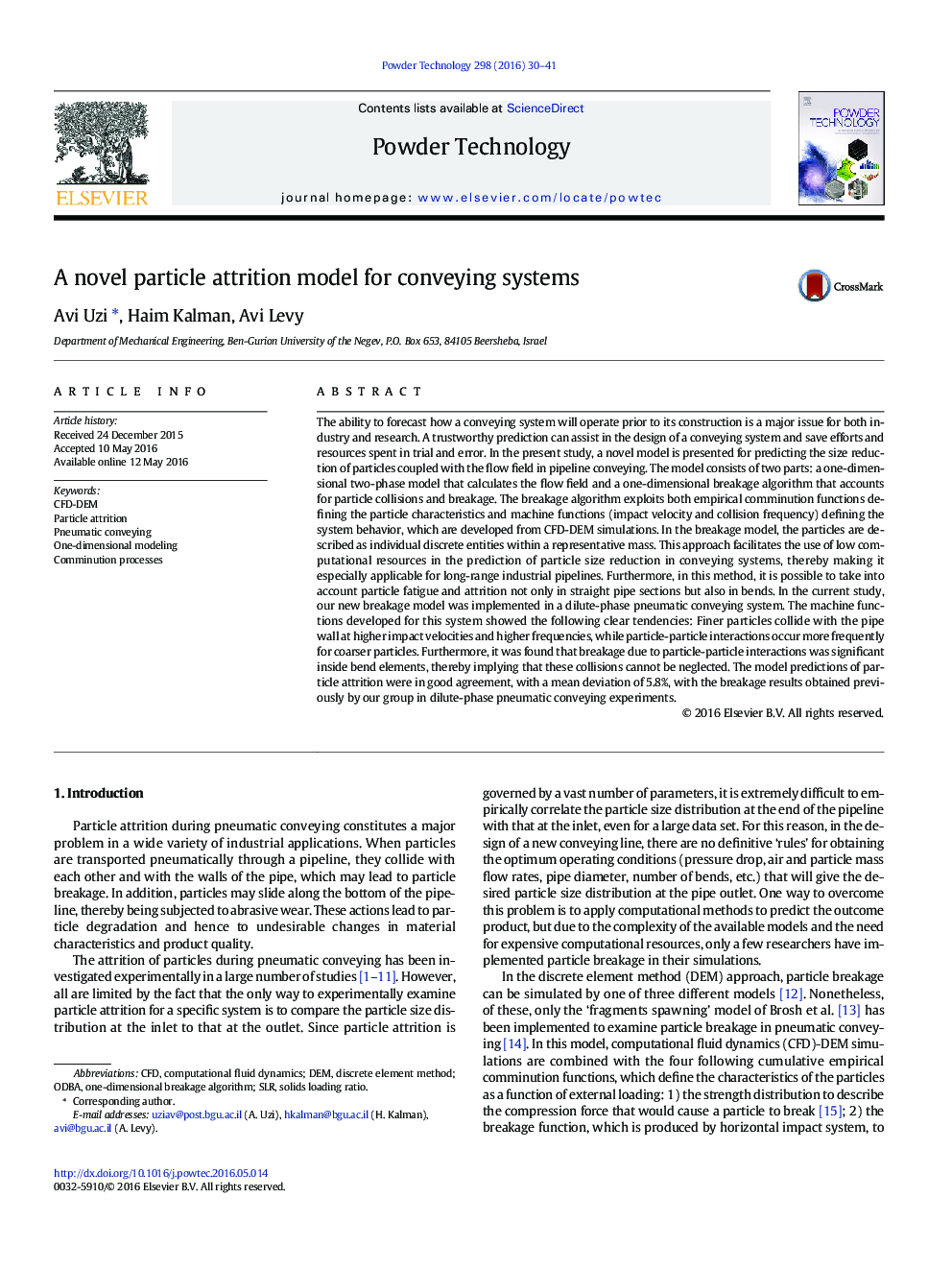| Article ID | Journal | Published Year | Pages | File Type |
|---|---|---|---|---|
| 234972 | Powder Technology | 2016 | 12 Pages |
•A one-dimensional particle breakage model is developed and validated.•Collision velocity and frequency functions are developed.•Particle-particle collisions play a significant role in attrition inside bends.•The attrition model is applicable for long-range industrial pipelines.
The ability to forecast how a conveying system will operate prior to its construction is a major issue for both industry and research. A trustworthy prediction can assist in the design of a conveying system and save efforts and resources spent in trial and error. In the present study, a novel model is presented for predicting the size reduction of particles coupled with the flow field in pipeline conveying. The model consists of two parts: a one-dimensional two-phase model that calculates the flow field and a one-dimensional breakage algorithm that accounts for particle collisions and breakage. The breakage algorithm exploits both empirical comminution functions defining the particle characteristics and machine functions (impact velocity and collision frequency) defining the system behavior, which are developed from CFD-DEM simulations. In the breakage model, the particles are described as individual discrete entities within a representative mass. This approach facilitates the use of low computational resources in the prediction of particle size reduction in conveying systems, thereby making it especially applicable for long-range industrial pipelines. Furthermore, in this method, it is possible to take into account particle fatigue and attrition not only in straight pipe sections but also in bends. In the current study, our new breakage model was implemented in a dilute-phase pneumatic conveying system. The machine functions developed for this system showed the following clear tendencies: Finer particles collide with the pipe wall at higher impact velocities and higher frequencies, while particle-particle interactions occur more frequently for coarser particles. Furthermore, it was found that breakage due to particle-particle interactions was significant inside bend elements, thereby implying that these collisions cannot be neglected. The model predictions of particle attrition were in good agreement, with a mean deviation of 5.8%, with the breakage results obtained previously by our group in dilute-phase pneumatic conveying experiments.
Graphical abstractFigure optionsDownload full-size imageDownload as PowerPoint slide
